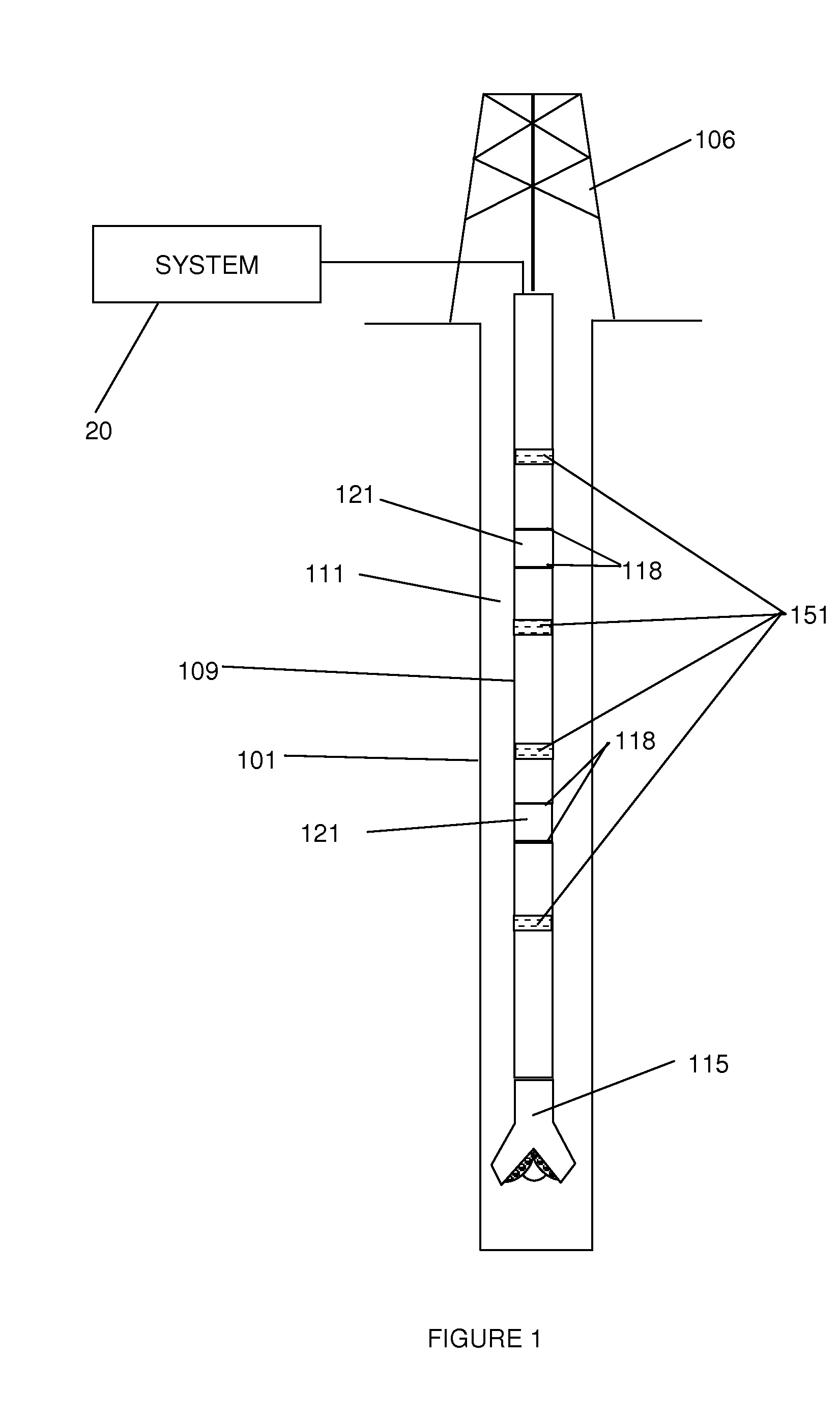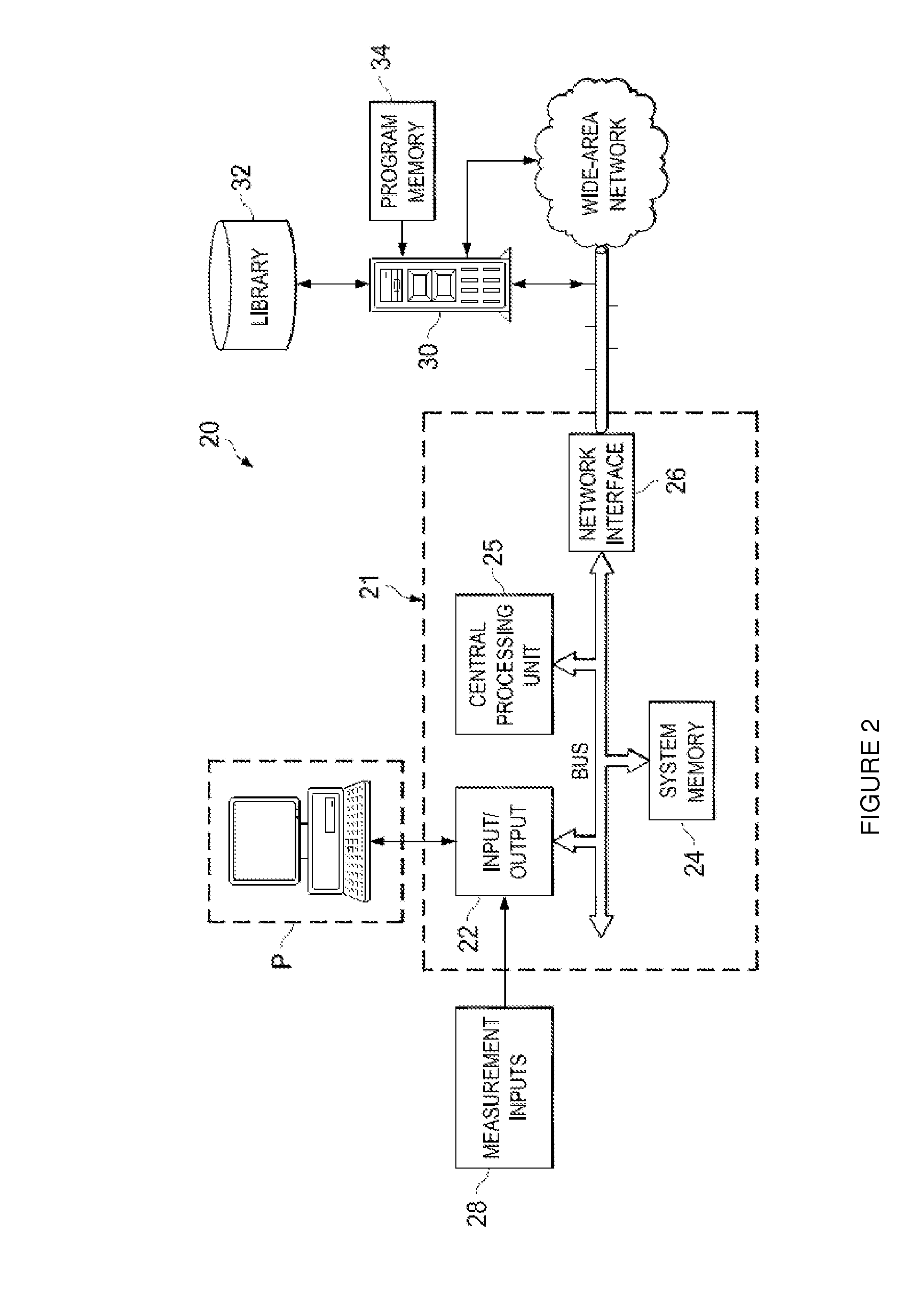Method of determining borehole conditions from distributed measurement data
a distributed measurement and data technology, applied in the field of drilling, can solve the problems of difficult to gather information about the conditions of drilling downhole, high cost, and difficult to solve, and achieve the effect of improving the accuracy of drilling results
- Summary
- Abstract
- Description
- Claims
- Application Information
AI Technical Summary
Benefits of technology
Problems solved by technology
Method used
Image
Examples
Embodiment Construction
[0036]Generally, embodiments of a method for determining and / or analyzing borehole conditions in real time involve the sensing and analysis of distributed measurement data. Without limitation, the methods disclosed herein may be applied to the drilling of a wellbore or borehole. In particular, the methods are useful for determining borehole conditions such as without limitation, cuttings loading, hole size, chemical pill location, and the like. Data or measurements may be taken in real time from sensors distributed along a drill string to create a distributed dataset. In addition, data or measurements may be collected of surface properties. These measurements, surface and / or distributed, may be taken during drilling or while the drill string is stationary. The data may be transmitted through the drill string to the surface. The collected data may be processed to determine one or more borehole conditions.
[0037]In general, as shown in FIG. 1, embodiments of the method utilize a drilli...
PUM
 Login to View More
Login to View More Abstract
Description
Claims
Application Information
 Login to View More
Login to View More - R&D
- Intellectual Property
- Life Sciences
- Materials
- Tech Scout
- Unparalleled Data Quality
- Higher Quality Content
- 60% Fewer Hallucinations
Browse by: Latest US Patents, China's latest patents, Technical Efficacy Thesaurus, Application Domain, Technology Topic, Popular Technical Reports.
© 2025 PatSnap. All rights reserved.Legal|Privacy policy|Modern Slavery Act Transparency Statement|Sitemap|About US| Contact US: help@patsnap.com



